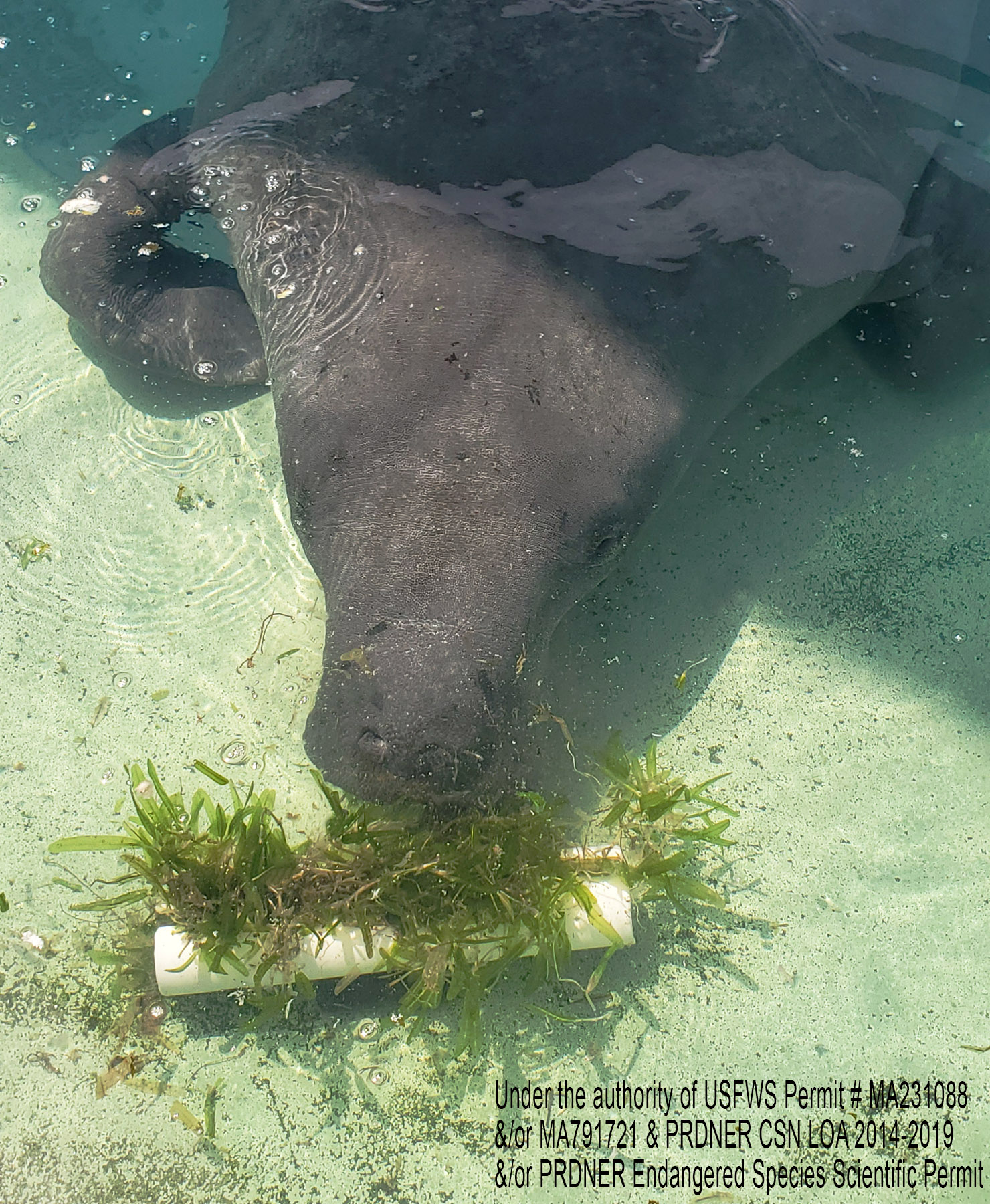 Herbivorous manatees in Puerto Rico feed on a variety of seagrasses. The four main species of seagrasses in their diet are manatee grass (Syringodium filiforme), turtle grass (Thalassia testudinum), paddle grass (Halophila decipiens) and shoal grass (Halodule wrightii).
Herbivorous manatees in Puerto Rico feed on a variety of seagrasses. The four main species of seagrasses in their diet are manatee grass (Syringodium filiforme), turtle grass (Thalassia testudinum), paddle grass (Halophila decipiens) and shoal grass (Halodule wrightii).
While at the Puerto Rico Manatee Conservation Center we feed manatees in rehabilitation with different types of vegetables, mostly lettuce, close to the end of their rehabilitation and prior to being release back to the sea, they must learn to eat natural vegetation. For this, the Center offers manatees during the last 6-9 months prior to release, invasive freshwater plants (water lettuce [Pistia stratiotes], water hyacinths [Eichhornia crassipes], waterthyme [Hydrilla verticillata]), and a taste of local seagrasses (manatee and turtle grasses). A “taste” means that these seagrasses are offered, under permit, in limited quantities due to the protected nature of these flowering plants. But the invasive freshwater plants are abundant in lakes and rivers throughout Puerto Rico, and being invasive, it is legal to collect and destroy them as plants that can be detrimental to the environment. However, in this case their collection is for a good cause.
But recently, an unfortunate opportunity has open up to help manatees in rehabilitation get accustomed to a more natural marine diet prior to being released back to sea. Another invasive plant has been discovered in the Caribbean and Puerto Rico. This is a seagrass from the Red Sea and Indian Ocean named broad-leaf seagrass (Halophila stipulacea). The marine plant is now found spreading rapidly in different parts of Puerto Rico, particularly in Culebra, Ceiba and Jobos Bay, the latter two primary habitats for manatees. Biologists from the Department of Natural and Environmental Resources (DNER) and the US Fish and Wildlife Service fear that it may compete and displace local populations of the other natural-occurring seagrasses.
The DNER is removing these in specific natural reserve areas, and in doing so, are offering the collected seagrass to the Center to train manatees scheduled for release onto eating natural marine vegetation. In October 2019, biologists from the DNER Jobos Bay National Estuarine Research Reserve delivered 20 kilograms of broad-leaf seagrass, which the two manatees scheduled for release in January 2020 ate readily.
While the Center does not expect to fulfill the entire dietary needs of manatees in rehabilitation with invasive plants, at least it is a way for naive manatees to hopefully understand that once in the wild, they need to feed on a variety of plants. They need to eat what ever plants are available, which in turn, provides them with a better chance of surviving. Thus, the use of invasive plants, both freshwater and marine, appear to serve endangered species conservation through their use as supplemental and pre-release diet training while under human care.
It is all a matter of taking a chance on opportunities, even if they come in the way of an invasive species problem. In a way, turning these opportunities into an aquatic plant fiesta for manatees.

